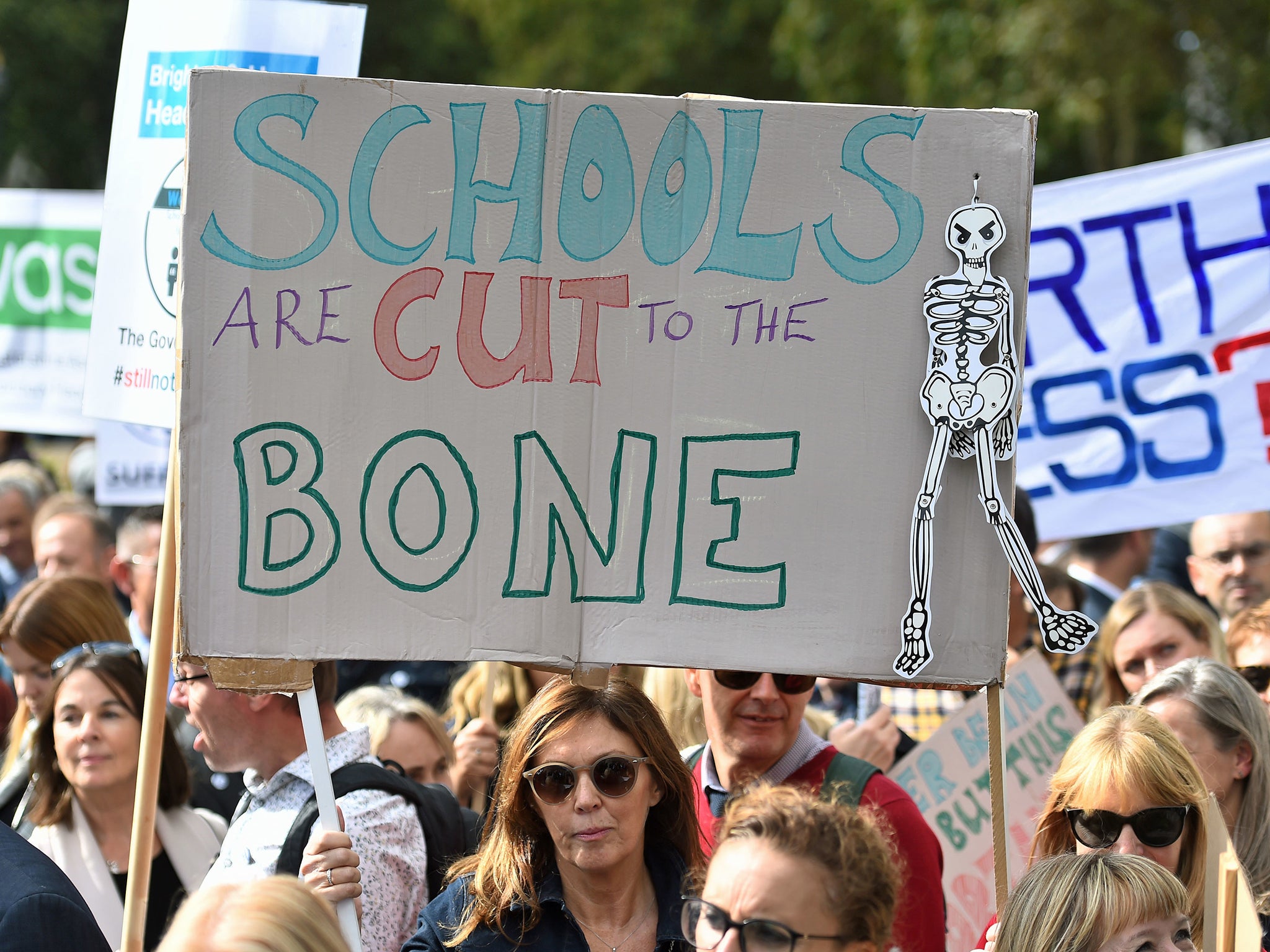Thousands of schools could face funding cuts despite Boris Johnson’s cash boost, unions warn
‘It will take a lot more than the government is offering to restore funding lost’

Your support helps us to tell the story
From reproductive rights to climate change to Big Tech, The Independent is on the ground when the story is developing. Whether it's investigating the financials of Elon Musk's pro-Trump PAC or producing our latest documentary, 'The A Word', which shines a light on the American women fighting for reproductive rights, we know how important it is to parse out the facts from the messaging.
At such a critical moment in US history, we need reporters on the ground. Your donation allows us to keep sending journalists to speak to both sides of the story.
The Independent is trusted by Americans across the entire political spectrum. And unlike many other quality news outlets, we choose not to lock Americans out of our reporting and analysis with paywalls. We believe quality journalism should be available to everyone, paid for by those who can afford it.
Your support makes all the difference.Thousands of schools could face real-terms funding cuts despite Boris Johnson’s cash boost, unions have warned.
Around 25 per cent of primaries (4,211 schools) and 26 per cent of secondaries (823 schools) will only get a per-pupil funding rise of 1.84 per cent – the minimum increase, an analysis suggests.
The inflationary increase will not be enough to cope with rising costs – and it could lead to further cuts in a bid to balance budgets, according to the education unions.
An analysis of new school-funding data for England shows the winners and losers in the first year of a three-year plan by the government to pump more money into the education system.
Some schools will see their per pupil funding rise by more than 50 per cent next year. But the majority of schools will receive increases of between 1.85 per cent and 10 per cent, the analysis finds.
In August, Mr Johnson pledged to increase school spending by £7.1bn by 2022-23 after years of campaigning by headteachers, teachers and parents for more cash.
The government has now published information on how the first year of investment (2020-21), totalling £2.6bn, will be allocated to schools.
But Paul Whiteman, general secretary of school leaders’ union NAHT, warned there will still be “losers”.
He said: “One in three schools will only receive an increase of around 1.8 per cent in their overall funding, which is still a real-terms cut.
“This shows that it will take a lot more than the government is currently offering in order to properly restore the funding that’s been lost over the past several years.
“Children and their families have seen class sizes soar, teaching assistants laid off, subjects dropped, resources diminish, and in many cases witnessed their school fall into disrepair, all because the ever-reducing budgets make it harder and harder to make ends meet.”
Geoff Barton, general secretary of the Association of School and College Leaders (ASCL), said: “The biggest concern is over the group of schools which will receive only an inflationary increase next year.
“This is because school costs are in fact rising above the rate of inflation, and this means many of these schools will have to make further cuts to their hard-pressed budgets.”
Kevin Courtney, joint general secretary of the National Education Union added: “The unfairness of the distribution of Johnson’s additional school funding is breathtaking.”
The east midlands and the southwest are among the biggest winners out of a government boost to school funding – as they will both get a 5 per cent increase in per pupil funding in 2020-21.
London, the West Midlands and the northeast will receive smaller rises – at 3.2 per cent, 3.6 per cent and 3.8 per cent respectively.
At a conference in the northeast, headteachers reportedly accused the government of funding more affluent Conservative areas rather than those serving the poor.
Labour MP Angela Rayner, shadow education secretary, said: “Boris Johnson’s Conservatives think they’re born to rule and will only ever look after the privileged few – that is why schools in more affluent, Conservative areas and those attending selective grammar schools are set to benefit, whilst pupils and schools in disadvantaged areas will continue to lose out, entrenching, not tackling, inequality.”
Education secretary Gavin Williamson said: “I recognise the pressures schools have faced and want them and parents to be safe in the knowledge that all children can get the top-quality education they deserve in classrooms across the country.
“Our continuing investment in education, coupled with a bold reform agenda and the work of Ofsted, will supercharge the ongoing rise in school standards.”
Additional reporting by PA
Join our commenting forum
Join thought-provoking conversations, follow other Independent readers and see their replies
Comments